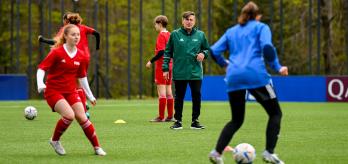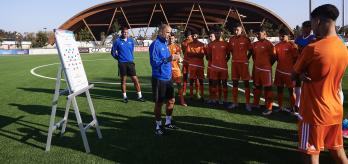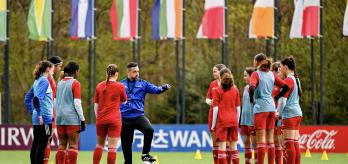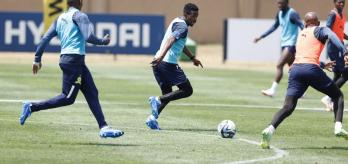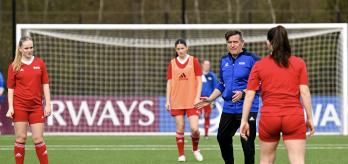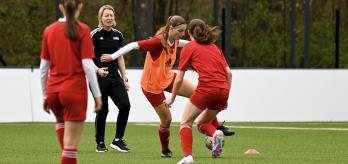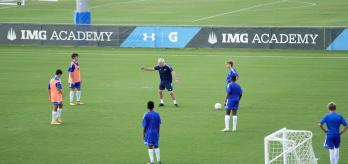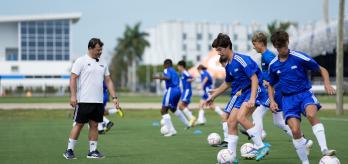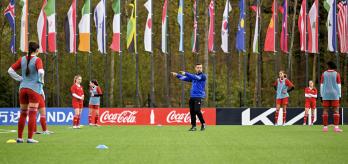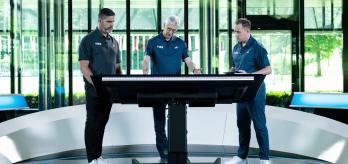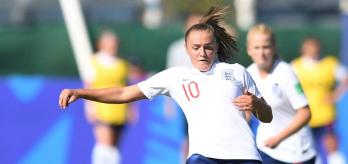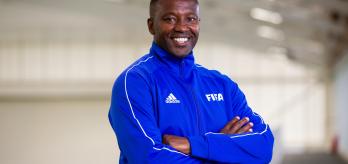Under pressure, players must use firm and precise passes, excellent body orientation, continuous communication and effective off-the-ball movement that provides constant support for team-mates on the ball.
In this session, FC Zürich Women’s Head Coach, Jacqueline Dünker, delivers a series of exercises to a group of girls focusing on passing under pressure. The session starts with a passing and receiving warm-up exercise to sharpen the player’s accuracy. The next exercise focuses on reacting quickly and under pressure so that players play through. The players then put their passing abilities to the test with two small-sided games that focus on creating chances under pressure.
Session overview
Key coaching points
-
Focus on a firm and close first touch that will prevent the ball from getting caught under foot.
-
Orientate the body so that the ball can be received on either the front or back foot and moved into the space intended.
-
Effective movement off the ball can provide multiple passing lanes for team-mates to play into.
-
Firm and precise passing is crucial to be able to successfully play through a press.
-
Rotate positions so that there is less predictability for defenders to read and more space can be opened up.
Part 1: Passing drill
The warm-up has been designed to ensure players are correctly passing and receiving the ball within a circuit. By focusing on first touch, body orientation and playing out, players will be sharper for the following exercises.
-
Position two cones in a straight line 20m apart. These are stations 1 and 4.
-
Halfway between these cones and 3m to the outside, mark out station 3.
-
Station 2 is parallel to station 3 but is 5m to the inside.
-
Replicate a second circuit in parallel 10m from the first circuit,.
-
On the second circuit, stations 1 and 4 are at the opposite ends of the first circuit.
-
Station 2 is shared between both circuits and should be in the middle.
-
Position two players per station on both circuits.
-
Two balls are in play at the same time and start at station 1 on both circuits.
-
The first pass is played inside to station 2.
-
The player at station 2 passes across to station 3.
-
The player at station 3 passes straight down the line to station 4.
-
Players at station 4 must then pass to station 1 on the other circuit.
-
The sequence repeats from station 1 on each circuit.
-
Add extra balls to increase the intensity and the players’ focus.
-
Limit touches for players.
-
Play clockwise.
-
A precise first touch allows players to get the ball out of their feet and play in the direction they wish to pass.
-
Orientate the body so that it can open in the direction the player wishes to go as they receive.
-
Players must not be static and should be ready to receive the ball on both the back foot and front foot.
-
Follow passes from station to station so that the circuit flows efficiently.
-
Accurate and firm passes must be played for the circuit to run efficiently.
Part 2: 4+4v4 inside a small area
In this exercise, players must get used to reacting quickly and passing under light pressure in small spaces. With a numerical advantage, players on the ball should have multiple options so that they can practise playing under pressure.
-
Mark out a 30x20m area or use the penalty area.
-
Split the group into four teams of four.
-
Each team should represent a colour (blue, green, yellow, orange).
-
The players move freely inside the area and pass to one another.
-
The coach will shout out three colours in any order.
-
The first two teams called out must keep possession between each other.
-
The third team called out must try to win the ball back.
-
The fourth team are not called out and does not participate in the play. They can continue to move freely inside the area.
-
For example, if the coach calls: “yellow, blue, green”, the yellow and blue teams play with each other and the green team must try to win the ball back. The orange team do not participate.
-
If the third team wins the ball back, they have to try and keep possession.
-
Once the coach calls out the teams, 30 seconds are given for the game to be played.
-
If the ball goes out of play, the coach will immediately put another one in play.
-
When the 30 seconds pass, the players return to freely passing between each other.
-
Players should use the width and length of the area to stand a better chance of keeping possession.
-
Be acutely aware of the information given by the coach and react quickly to either receive the ball or press to win it back.
-
Close control, precise passing and good communication will help players maintain possession for longer.
-
Constantly open passing lanes when not in possession to give team-mates passing options.
Part 3: 2v1 attack v. defence
This exercise is focused on playing under pressure closer to the goal. Players must combine to evade a pressing defender and work space for a shot at goal.
-
Mark out two 20x15m areas.
-
Use a full-sized goal on each area but place them at opposite ends to the other area.
-
Place a goalkeeper inside each goal.
-
On each pitch, set up a 2v1 scenario.
-
The remaining players stay at the opposite end of the goal with some balls.
-
The ball starts with the player at the front of the queue.
-
This player passes to the closest attacker inside the area.
-
The sole defender decides whether to engage and press or keep their distance.
-
The two attackers must combine and try to score a goal.
-
Once a goal is scored, the goalkeeper saves it or the defender wins the ball, new players enter the area.
-
Players must shoot within four passes to add more pressure.
-
Rotate defenders so that all players get to play each role.
-
Play a 4v2 scenario inside the area.
-
The second defender and fourth attacker must start the game from where the ball is played.
-
Players must shoot within five passes to add more pressure.
-
Defenders must decide whether to press or keep a good distance from the attackers by reading triggers such as poor touch and telegraphed passes.
-
Constantly open passing lanes so that team-mates have good options to find.
-
Show where you wish to receive (back foot/front foot) and open the body in the direction you wish to play in.
-
Keep the ball rolling at all times so that it is both harder for the defender to anticipate and easier for the attacker to receive in good space.
Part 4: 4v3 attack v. defence
This final exercise increases the pressure on the team trying to build an attack. By adding more defenders, the team in possession have less space and time to play through the opposition’s press.
-
Mark out two 20x15m areas.
-
Use a full-sized goal on each area but place them at opposite ends to the other area.
-
Place a goalkeeper inside each goal.
-
Place two cones 5m apart at the opposite end.
-
Play a 4v3 scenario inside the area.
-
The ball starts with the deepest attacking player at one end of the pitch.
-
The attacking team must use their numerical advantage to progress the ball and try to score.
-
The three defenders must prevent them from scoring.
-
If the defending team wins the ball, they must try to carry the ball between the cones.
-
Play through pressure by constantly opening passing lanes and finding pockets of space to play into.
-
Players off the ball should rotate positions to draw in the defenders and create space elsewhere.
-
The defending team must use the goalkeeper to restore numerical equality and progress the ball better.
-
Player should show team-mates which foot they wish to receive the ball with an open their body posture so that they can play in the direction they wish to after receiving.
















